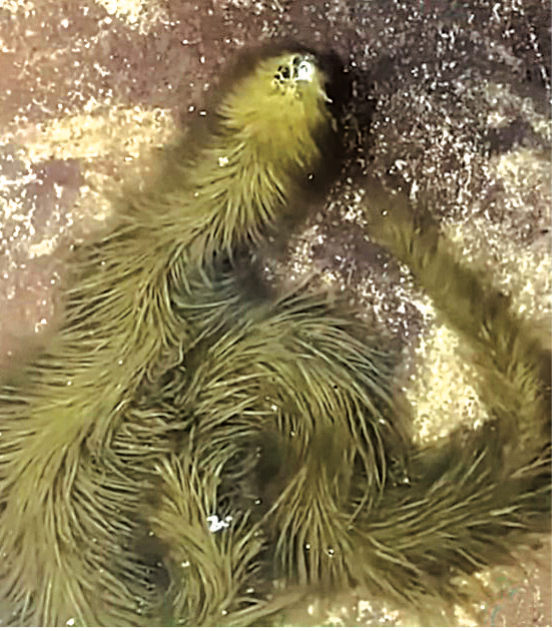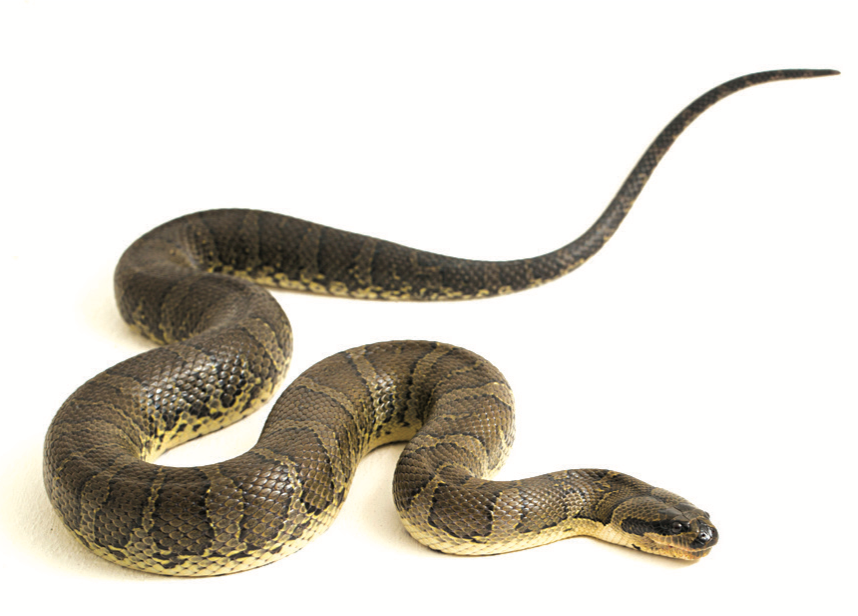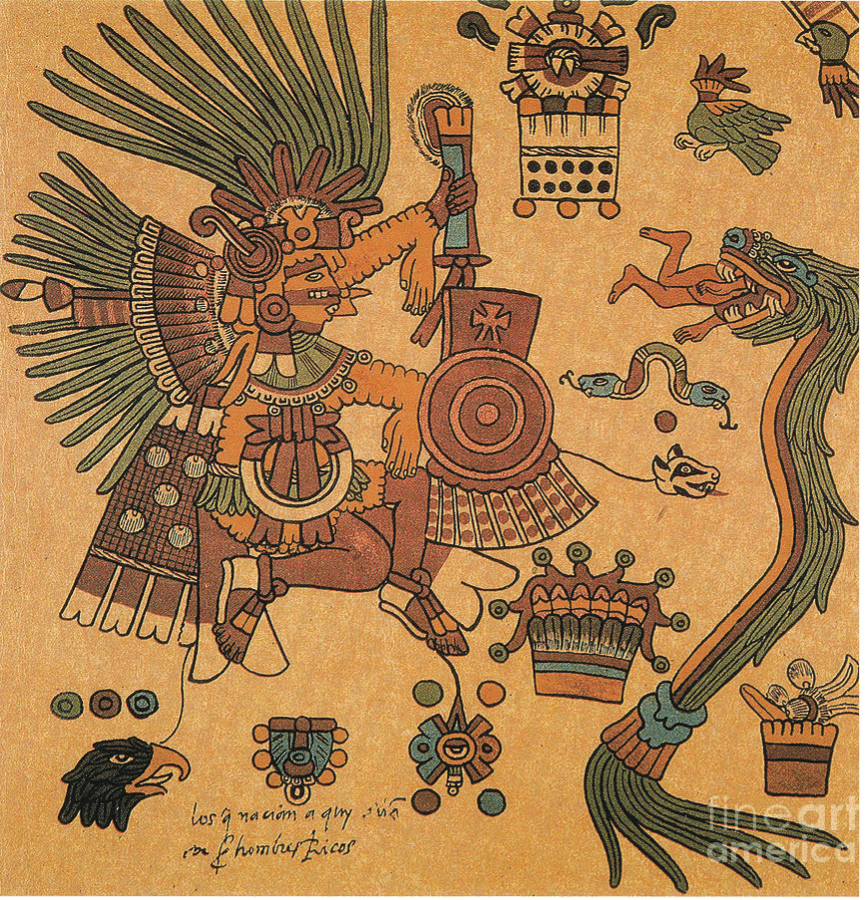A man named Tu in Thailand took home something that seemed more mythical than real: From the photos shown online, it appears to be a Snake who seems to be covered in a hair-like sheath all over.
Tu’s thirty-year-old niece, Waraporn Panyasarn, decided to take a video so that people online could figure out what it was, according to Yahoo! News. Sam Chatfield, a Snake species coordinator, told Australian reporters that it was most probably a Puff-Faced Water Snake who had algae growing on their scales.
Now, let’s think about that for a moment: From a mythical case, this situation has turned into a strange one of either a symbiotic relationship or a brilliant adaptation.
FOLIAGE AS FAKE FUR
Apparently, to have a furry Snake, two things must happen: The Snake must live in conditions where algae can grow on their skin and must have characteristics that allow for the slow growth of algae to happen – so that they can grow some fur.

PATIENCE LEADS TO PSEUDO-FUR
Homalopsis buccata, or the Puff-Faced Water Snake, is a mildly venomous species found in Southeast Asia. And, true to the theory of the experts, their habitat includes the southern area of Thailand.
With a diet of catfish, Asian Swamp Eels, Frogs, and freshwater Crustaceans, Thai locals believe that it was possible for the algae to grow on the Snake’s scales because the creature waited for so long in swampy waters to catch prey.

BEING BEFOULED BY ALGAE
The Snake in question was probably experiencing what is called epibiosis, a form of biofouling similar to how Barnacles would settle on the hull of a ship – in this case, algae took root on the surface of the Snake’s scales. It’s not certain if in the case of the Puff-Faced Water Snake, this furry algae suit has a parasitic relationship with the Snake themself.

In a 2010 study by Richard Shine, Gregory P. Brown, Claire Goiran published in the Proceedings of the Royal Society: Biological Sciences, researchers found out that algal fouling had something to do with the colors of the Snake. Banded Snakes tended to have more algae, while dark or black Snakes had much less. They also traced lesser activity on the part of the Snake if they had more algal befouling, and that the said algal bloom on their skin made for a slower swimming speed in the lab.

It was then thought possible that there were certain evolutionary directions followed when it came to snakes being vulnerable. Interestingly, Puff-Faced Water Snakes have a banded color pattern.
Snake expert Chatfield wasn’t too worried for the Snake; however, she stated that all it would take to remove the befouled scales would be for the Snake to go through a regular routine of shedding their own skin.
So remember, when you do see a furry Snake in Thailand, it’s not a mystical animal – it’s a creature who needs to clean themself up a bit more.
THE MYTH OF QUETZALCOATL

In South America, it’s not about furry Snakes but feathered ones – specifically, the feathered Snake god known as Quetzalcoatl.
Quetzalcoatl’s name is derived from the idea of a “Serpent with precious feathers,” which supposedly referred to wise men, if not the wisest. It comes as no surprise then that the god-Snake’s domain included arts, crafts, and knowledge, and was a patron of education and the culture’s priests and priesthood.

Quetzalcoatl from the sixteenth-century Codex Borbonicus. (MexicoLore)
Indeed, a deity that was represented as a feathered Serpent has been present in many of the South American cultures.
It makes one wonder if the imagery of Quetzalcoatl was influenced in part by Snakes who did have algae on their scales, waiting “patiently” for their prey to appear right in front of them – some people may have interpreted this as the Snakes having knowledge, or that they “learned how to hunt their enemies.”

Be that as it may, it’s also possible that the imagery of Quetzalcoatl and the furry Snakes in Thailand has captured the collective imagination, simply because the idea of a Snake having something other than scales on their skin is too unusual to ignore.
FEATHERED SNAKES: DINOSAURS?
Is it possible that the cultural memory of feathered Snakes may have its beginnings in dinosaurs? As precursors of modern reptiles, it’s now generally accepted that many dinosaurs did have feathers or feather prototypes covering parts of their bodies.
On the other hand, the issue here is that if it were possible for ancient Snake- like reptiles to survive, then did they have feathers?
At the risk of running into the study of strange and undiscovered animals (cryptozoology), there is a small possibility that this could be true. But more than likely, the mythological and cultural images of feathered — and furry! — Snakes are more about symbolism than they are a remembrance of ancient animals.







